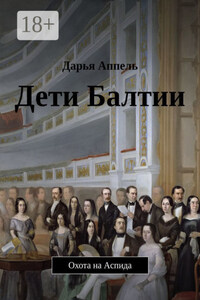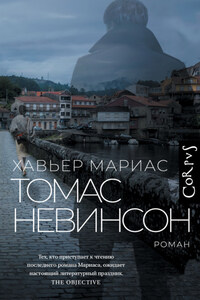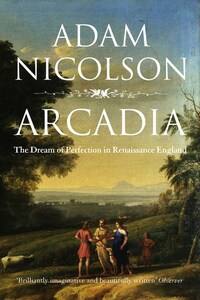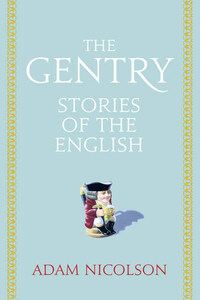William Collins
An imprint of HarperCollinsPublishers
1 London Bridge Street
London, SE1 9GF
WilliamCollinsBooks.com
Published by William Collins in 2014
Copyright © Adam Nicolson 2014
The Adam Nicolson asserts the moral right to be identified as the author of this work.
A catalogue record for this book is available from the British Library.
All rights reserved under International and Pan-American Copyright Conventions. By payment of the required fees, you have been granted the non-exclusive, non-transferable right to access and read the text of this e-book on screen. No part of this text may be reproduced, transmitted, down-loaded, decompiled, reverse engineered, or stored in or introduced into any information storage and retrieval system, in any form or by any means, whether electronic or mechanical, now known or hereinafter invented, without the express written permission of HarperCollins.
Source ISBN: 9780007335527
Ebook Edition © 2014 ISBN: 9780007335541
Version: 2016-04-15
COLOUR PLATES
1 ‘The Mask of Agamemnon’. (Universal History Archive/Getty Images)
2 Stamnos (vase) depicting Odysseus tied to the mast listening to the songs of the Sirens, c.480 BC, Athens. (Werner Forman/Universal Images Group/Getty Images)
3 Mycenaean funerary stele with relief chariot scene, c.1600 BC. (Photo by Adam Nicolson)
4 Mycenaean gold cup, sixteenth century BC. (National Archaeological Museum of Athens.DeAgostini/Getty Images)
5 Engraving depicting an octopus on a gold cup from Tholos of Dendra, near Midea, sixteenth century BC. (National Archaeological Museum of Athens.DeAgostini/Getty Images)
6 Mycenaean gold butterfly scales from the Shaft Graves, sixteenth century BC. (National Archaeological Museum of Athens. Photo by Adam Nicolson)
7 Attic terracotta lekythos (oil flask), attributed to the Achilles Painter, c.440 BC. (The Metropolitan Museum of Art.akg-images)
8 Mycenaean gold elliptical funeral diadem, from the ‘Grave of the Women’, sixteenth century BC. (National Archaeological Museum of Athens.Universal History Archive/UIG via Getty Images)
9 A gold death suit for a Mycenaean child, sixteenth century BC. (National Archaeological Museum of Athens. Photo by Adam Nicolson)
10 Damascened daggers made of gold, silver, bronze and niello, from Mycenae and Pylos. (DEA/G. DAGLI ORTI/De Agostini/Getty Images)
11 Writing tablet from the Ulu Burun wreck, c.1325 BC. (© Institute of Nautical Archaeology)
12 The tower of the Acropolis in Tiryns. (DeAgostini/Getty Images)
13 Nestor’s cup. (Museum of Ischia, Italy. ©Maria Grazia Casella/Alamy)
14 Kantharos (drinking cup) depicting Odysseus and Nausicaa. (© The Trustees of the British Museum. All rights reserved)
15 Extremaduran warrior with shield, sword and mirror. (Museo Arqueológico Provincial de Badajoz. Photo by Adam Nicolson)
16 Stabbed Bronze Age phalera (horse harness ornament). (Wiltshire Museum. Photo by Adam Nicolson)
17 Extremaduran warriors with bow, spear, shield, swords, a bubble-handled mirror, what may be a musical instrument and large, man-slaughtering hands. (Museo Arqueológico Provincial de Badajoz. Photo by Adam Nicolson)
18 The Rio Odiel. (Photo by Adam Nicolson)
19 Silver gilt Cypriot bowl, c.725–675 BC. (© The Metropolitan Museum of Art/Art Resource/Scala, Florence)
20 Gold libation bowl, c.625 BC, found at Olympia, 1916. (Museum of Fine Arts, Boston. Photo by Adam Nicolson)
21 Minoan Kamares eggshell ware cup. (Heraklion Archaeological Museum, Crete.Leemage/UIG via Getty Images)
22 Ivory cosmetic case in the form of a duck. (© The Trustees of the British Museum. All rights reserved. Photo by Adam Nicolson)
23David and Goliath by Michelangelo Merisi da Caravaggio (1571–1610), oil on canvas. (Museo del Prado. Photo by DeAgostini/Getty Images)
24 Mycenaean bronze dagger with an integral hilt and pommel, c.1300–1100 BC (© The Trustees of the British Museum. All rights reserved)
25 Wild pear tree, Ithaca. (Photo by Adam Nicolson)
26 Minoan bath, mid-fourteenth century BC. (© Carlos Collection of Ancient Art, Emory University)
27 Dionysus on a reach, surrounded by dolphins, 530 BC. (Staatliche Antikensammlung, Munich.Ann Ronan Pictures/Print Collector/Getty Images)
TEXT ILLUSTRATIONS
1 Terracotta plate depicting a poet on his death bed, musing on the past with his lyre above him, c.595–570 BC. (© The Metropolitan Museum of Art/Art Resource/Scala, Florence)
2 Mural from Palace of Nestor at Pylos. (Courtesy of the Department of Classics, University of Cincinnati)










